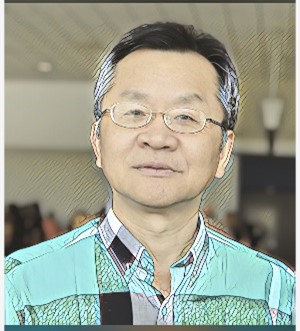 |
FIEEE, FAAAS, FIAPR, MAEDean, School of Computer Science and EngineeringSouth China University of Technology |
C. L. Philip Chen is the Chair Professor and Dean of the College of Computer Science and Engineering, South China University of Technology. He is a Fellow of IEEE, AAAS, IAPR, CAA, and HKIE; a member of Academia Europaea (AE), and a member of European Academy of Sciences and Arts (EASA). He received IEEE Norbert Wiener Award in 2018 for his contribution in systems and cybernetics, and machine learnings, and IEEE Joseph G. Wohl Outstanding Career award, and received two times best transactions paper award from IEEE Transactions on Neural Networks and Learning Systems for his papers in 2014 and 2018 and he is a highly cited researcher by Clarivate Analytics from 2018-2022. His current research interests include cybernetics, systems, and computational intelligence. He was the Editor-in-Chief of the IEEE Transactions on Cybernetics, the Editor-in-Chief of the IEEE Transactions on Systems, Man, and Cybernetics: Systems, President of IEEE Systems, Man, and Cybernetics Society.
On the Explainability of Fuzzy Broad Learning (Neuro) Systems (FBLS): Analysis on the Tradeoff between Accuracy and Complexity
The fuzzy broad learning system (FBLS) is a recently proposed neuro-fuzzy model that shares the similar structure of a broad learning system (BLS). It shows high accuracy in both classification and regression tasks and inherits the fast computational nature of a BLS. However, the ensemble of several fuzzy subsystems in an FBLS decreases the possibility of understanding the fuzzy model since the fuzzy rules from different fuzzy systems are difficult to combine together while keeping the consistence.
To balance the model accuracy and complexity, this talk is to discuss a synthetically simplified FBLS with better interpretability, named compact FBLS (CFBLS), which can generate much fewer and more explainable fuzzy rules for understanding. In such a way, only one traditional Takagi–Sugeno–Kang fuzzy system is employed in the feature layer of a CFBLS, and the input universe of discourse is equally partitioned to obtain the fuzzy sets with proper linguistic labels accordingly. The random feature selection matrix and rule combination matrix are employed to reduce the total number of fuzzy rules and to avoid the “curse of dimensionality.” The experiments on the popular datasets indicate that the CFBLS can generate a smaller set of comprehensible fuzzy rules and achieve much higher accuracy than some state-of-the-art neuro-fuzzy models. Moreover, the advantage of CFBLS is also verified in a real-world application.